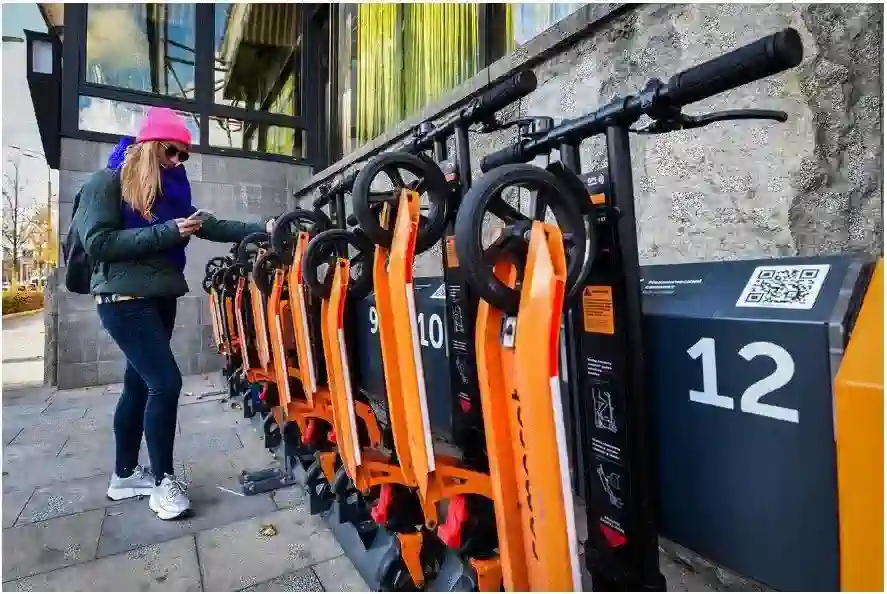Russia’s Surging Lightweight Electric Scooter Sales
Table of Contents
Since electric scooters started, Europe and North America have been popular. They like to ride. But people forget about Russia. Russia doesn’t sell as many as Europe or North America. But they’re growing fast too. Even after sickness spread, Russia wants more lightweight electric scooters.
1. 2023’s Boom in Russia’s Electric Scooter Sales
In 2023, many companies wanted something new. The easy money was gone. They tried new things, like new tech and ads. They wanted to make fancy smart products, not cheap ones.
Russia is different. They just kept growing. In the first part of the year, Russia sold 43% more lightweight electric scooters. They sold 245,000. Many people use them instead of cars or taxis. 85% of these are lightweight electric scooters. 10% are electric bikes. The rest are other kinds. In Russia, it’s too cold in spring and winter to ride. But in summer, sales go up every month. Shared scooters are popular. The cold weather means you can only ride from May to October. Owning a scooter means it sits half the year. So, sharing is better. No need to charge or store it. Experts say twice as many people used shared scooters this year. Some cities had 10 times or 11 times more users. Moscow, St. Petersburg, and Yekaterinburg had the most.
Most scooter riders are 25 to 35 years old. They make up 47% of all users. But older people, like over 50, are using them more. Their numbers went up 84%. People of all ages like them.
2. Russia’s Rising Demand for Lightweight Electric Scooter
Russia’s market isn’t as big as Europe or North America. But it’s still important. Most of their bikes and scooters come from China. China sells a lot to Russia every year. With some help from outside factors, scooter and bike sales from Inner Mongolia to Russia went up. They rose 49% in the first half of 2020. Russian company data says 2021’s sales were 60 times more than before.
In Russia, lightweight electric scooters sell a lot. For the first 9 months of 2021, sales on Russia’s AliExpress rose by over 6 times. On Russia’s big online shop, Ozon, there was double the demand. Most people buy online. They spend differently on different platforms. On Ozon, scooters costing 19,000-20,000 rubles are popular. On Svyaznoy, a famous electronics shop, people spend 40,000-55,000 rubles.
Chinese brands are big in Russia. Makhalyuk says China’s Kugoo is the top brand. But competition made its share drop from 30% to 21.9%. Another Chinese brand, Hiper, has a 13.9% share, up 3% from before. Ninebot is third with 12.6%.
3. Moscow Sets Speed Limits: The New Scooter Rules
In the first half of 2021, accidents with lightweight electric scooters in Russia went up. They went from 160 to 266. Accidents with kids went from 21 to 38. 188 people got hurt in different ways. But, many in Russia still like these scooters. The Russian government will spend 75 million rubles on them. Starting March 1, 2023, Russia says these scooters are vehicles. They also say hoverboards and similar things are Personal Mobility Devices (PMDs). Moscow set a speed limit for rented scooters. It’s 15 km/h in the city center. Scooters slow down to that speed there. Personal scooters can go up to 25 km/h. They can be on roads with a 60 km/h speed limit. If no shoulder, they stay on the right. Many in Russia pick scooters because they’re easy and cheap. They’re good for city travel. People say they save time and avoid traffic. So, scooter sales and sharing are up in Russia. Russia is working on rules and roads for them. Soon, scooters might be a big part of travel in Russia.
4. Best Electric Scooter Battery
4.1 Types of Electric Scooter Battery
Electric scooters run on different batteries, like lithium-ion, lithium polymer, lithium iron phosphate (LiFePO4), nickel metal hydride (NiMH), and sealed lead acid (SLA) batteries. LiFePO4 is the best kind, known for safety and durability.
4.2 Factors of Electric Scooter Battery
Important factors for electric scooter batteries include capacity (energy storage), voltage (speed and power), and charging time. Usage habits matter; deep discharges, overcharging, and temperature extremes affect battery life.
Li-ion and LiPo batteries are popular. Li-ion has higher energy density than LiPo, but loses capacity faster and is cheaper. Sealed lead-acid batteries are less efficient and used in cheaper scooters, while lithium-ion is preferred for high-end ones.
Efficiency and lifespan differ. Li-ion is more efficient (95% energy return), charges faster, and lasts more cycles, while lead-acid is less efficient (80-85%), charges slowly, and has shorter lifespan. LiFePO4 batteries offer stability, safety, and longer cycles. Lead-acid is cheaper but less efficient. Li-ion is costly but efficient and durable.
Electric scooters mainly use lithium-ion batteries due to energy density and longevity. Voltage, amp-hours, and watt-hours measure battery power. Voltage is electrical potential; higher voltage means more energy stored. Amp-hours indicate charge supply in an hour; higher figure means more capacity. Watt-hours measure capacity; higher value means longer range. Li-ion batteries are common due to smaller size, longer lifespan, and efficiency. Lead-acid batteries are older and less energy-dense.
4.3 MANLY Battery
MANLY Battery is a top-notch Chinese wholesale battery producer with a track record spanning over 13 years. We are professional battery manufacturer, supplier, and OEM. Impressively, We churn out more than 6MWh capacity of the battery cells and packs daily. In addition, we put together 3,000 batteries daily.
MANLY battery factory covers an area of 65,000 square meters. With strongholds in Shenzhen, Dongguan, and Huizhou, our presence is robust. We proudly back our products with a 10-year warranty. MANLY 24V, 36V, and 48V LiFePO4 Battery are suitable for electric scooter.



